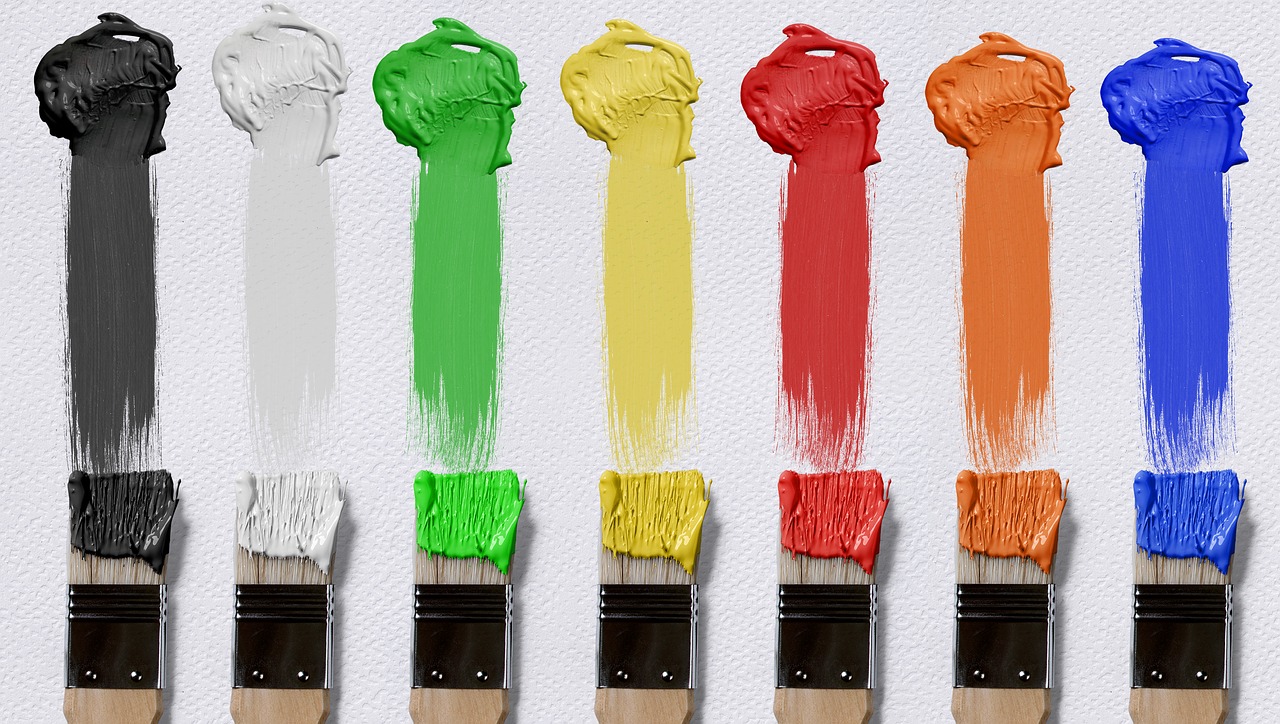
Feature – Rich in Color: Wheelchair-Bound Artist Lets His Creativity Soar
By M. Scott Morris
Click here for link.
TUPELO – People walk away from car accidents every day. William Heard wasn’t so lucky.
A March 2000 crash on a gravel road in Starkville threw him from the back seat to the front. Heard, who was trained as a National Guard medic, immediately understood the situation.
“I was conscious the whole time,” he said. “I knew I was paralyzed because I couldn’t move or feel anything.”
There were surgeries and long months in the hospital.
That was followed by more months in rehab, where he learned to live in a wheelchair without full use of his arms and hands.
Finally, there was a drunken year of depression.
Then came an awakening.
“I woke up one day and said, This won’t do,'” the 30-year-old Tupelo resident said. “It was a year to the day after I’d gotten out of rehab.”
Heard rediscovered his will to live. In the process, he uncovered a passion that now consumes his time, energy and talent.
He’s an artist, something he’d never dreamed of becoming before the spring of 2000.
“If I wasn’t painting, it would drive me crazy,” Heard said, with a paint-splattered wheelchair bearing silent witness to his passion. “If you don’t do the thing you love, it’ll drive you insane.”
Occupational therapy is commonly prescribed for people recovering from debilitating injuries, but Heard’s work is far more than a way to push the limits of his body.
In May, he set up a booth at the 2005 Cellular South GumTree Festival in downtown Tupelo.
A little more than a week ago, he traveled to Cape Girardeau, Mo., to see one of his paintings hanging in the 30th annual Girardot National Juried Exhibition along with 77 other pieces by artists from New York to California.
“It’s very eye-catching. It’s gorgeous,” Margaret Dement, assistant director of the Art Council of Southeastern Missouri, said of the painting, “Universe.” “He’s an excellent artist. It looks like he’s been at it for a long time, not just a couple of years.”
Not Ready Yet
Like hair and eye color, talent can be hereditary. Heard’s mother, Susan Heard, has been painting for some 40 years. She operates Daddy’s Duck, a gift and craft shop at Jackson and Clayton streets in Tupelo.
“Before the accident, William didn’t have an artistic bone in his body,” she said.
Heard was drawn more to the athletic life. He played soccer and ran track at THS and was a member of the Golden Wave’s 1993 state champion football team.
“I ran back punts,” he said, smiling at the memory. “That was a rush, man.”
After graduating in 1994, he went into the National Guard to be trained as a medic before enrolling at Belhaven College, then Itawamba Community College, then Mississippi State University. Throughout those years, he managed to steer clear of artistic pursuits.
“I was in business and furniture production,” he said. “I thought I was going to be selling furniture. I didn’t have a clue about art. I’ve been around it my whole life, but never attempted to do it myself.”
In addition to higher learning, college provided both freedom and temptation. Heard didn’t want to get specific, only to say that he embraced a “party lifestyle.”
“Before the wreck, I had a good time. I was pretty wild,” he said. “The wreck definitely slowed me down and probably saved my life in a way.”
Art finally started to creep into his world while Heard was at a rehab center in Georgia. With a brush strapped to his hand, he painted ceramic pots.
“We’d fire them in the kiln, and the paint would pop and explode and look really cool,” he recalled.
Still, he returned from rehab to a world seemingly absent of color. All of his losses piled up in his mind.
“I was in shambles,” he said. “I pretty much tried to drink myself to sleep. I did a pretty good job of it, too.”
The Path
His rebirth was slow, but steady. He started by moving his body in the wheelchair – stretching his arms, rotating his trunk – and performing partial sit-ups in bed.
After six or seven months, he added weights and elastic exercise bands. He spent a year and a half riding horses as part of a hippotherapy regimen that further developed his muscles.
Another obstacle was overcome when Heard had surgery on his right hand. Though he still had all 10 fingers, the accident left him unable to pinch. The surgery allowed him to open and close his right hand by moving his wrist up and down.
“That surgery changed my life,” he said. “I could finally grab hold of stuff.”
About two years ago, Heard began experimenting with painting. At first, he strapped a brush onto his hand, but this never felt comfortable.
“I didn’t feel it, you know?” he said.
The television provided his answer. He happened to see the movie “Pollock,” about an abstract expressionist painter who defied conventions in the 1940s and ’50s.
“They called him Jack the Dripper,'” said Tina Lutz, executive director of the GumTree Museum of Art. “Jackson Pollock broke away from traditional painting and started to pour the paint and let it drip down. He was a real rebel. He decided you didn’t have to apply paint with a brush.”
Pollock blazed the trail, and Heard decided to follow.
Messy Process
The floor of his studio at Daddy’s Duck is dappled with dozens of colors. He has two wheelchairs: a black one for going about town and a multi-hued one for creativity.
“I got a new chair after the other was coated,” he said. “When I first got into this, I didn’t think about my chair. I was still going places with paint on it.”
His shoes and clothes, as well as an old cell phone, testify that Heard’s process is chaotic and messy. Even his dog, Primo, gets extra dabs of color every now and then.
“I’ve got paint on my sheets at home. It follows me wherever I go. I can’t get away from it,” he said. “You can’t even see the skin on my hands at the end of a night of painting. It comes off pretty easily, though.”
Work begins when he gets into a converted van and makes the rounds to Classic Finishes, Sherwin Williams and Lowes, where he finds mistints, mixed colors that didn’t quite meet other customers’ expectations.
“When they mess it up, they put them aside and sell them cheap. I pour so much on that I can use a gallon on one painting,” he said. “If I really want to add a specific color, I’ll buy a quart or two of what I need.”
He places the canvas on a table that was specially made to be level with his chair.
With plastic bowls or quart cans in his lap, he starts by pouring paint onto the canvas, which he adjusts this way and that to guide his creation into being.
“I start out doing what I think I see in my mind, and it will end up halfway through becoming something different,” he said. “I see something and I try to re-create it, but it usually comes out differently.”
He uses plastic spoons to add splashes of color. Each spoon has a Styrofoam ball stuck to the end to make it easier to grab with his surgically modified hand.
“Sometimes I’ll use sticks or spoons or whatever I can find to draw in the paint to get what I want,” he said.
He steers the wheelchair around the table and canvas, adding a little here, drawing something there, following his artist’s intuition. A piece may take two hours or two weeks. He knows when it’s finished.
“I want it to be just the way I want it,” he said. “I don’t want to leave anything undone. It would drive me nuts.”
Getting Noticed
The result is usually abstract and open to interpretation, though he’s done a series of “quiltwork” butterflies that are easily identified.
It took time to develop confidence in his artistic process. Some paintings are lost for all time because he covered them as soon as they were finished.
“Either I didn’t like it or thought someone else wouldn’t like it,” he said. “I learned you have to trust yourself at least until it’s done and finished because it’s your work of art. There are no mistakes.”
A.J. “Gus” Staub III, a Tupelo artist who works with colored pencils, happened to see photos of Heard’s work and was impressed enough to suggest entering pieces in the Missouri show.
“He doesn’t have a lot of training,” Staub said, “but he’s got an inborn sense of color that a lot of people don’t have, and he’s got a great sense of fun. He’s doing some exciting stuff.”
Art lovers at this year’s GumTree Festival agreed. Heard sold several pieces, though it wasn’t necessarily easy on the budding artist.
“When one sold, it was like Ahhh, my baby,'” he said, mockingly grabbing at his heart. “Seriously, I do this because I want people to enjoy them.”
In addition to Daddy’s Duck, his work hangs at IVs Restaurant and Options Salon, as well as Living Independence For Everyone, where he also serves as a peer counselor for other people with disabilities.
Going On
All artists face obstacles. Internal and external critics have derailed many a creative urge. Heard said he’s no different from any other painter when approaching an empty canvas. His limitations are the same that bedevil the rest of the art world; no more, no less.
“I really don’t look at this as being much of a problem,” he said, glancing at his wheelchair. “It’s got to a point where I’m used to it. It takes as much time now getting ready in the morning as before I had the wreck.
“Trial and error, that’s what my life kind of turned into,” he continued. “Every time I do a painting, I want it to be totally different. I’m always trying to find a way to do it better. I want to see what I can come up with, you know?”
